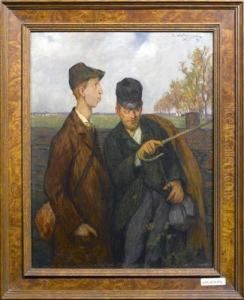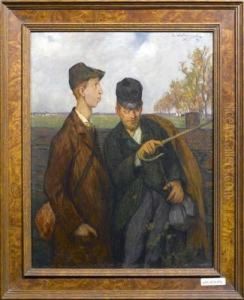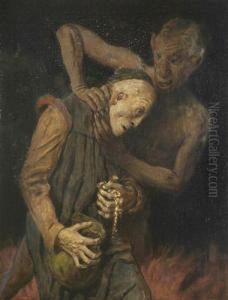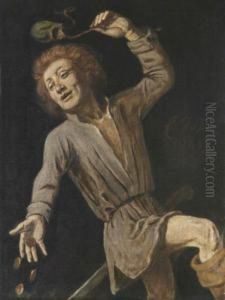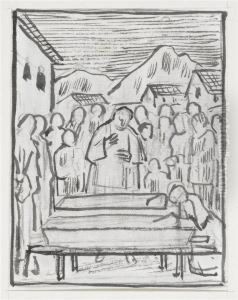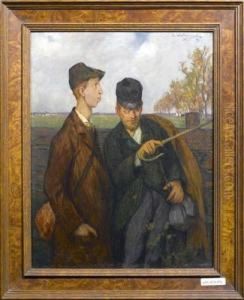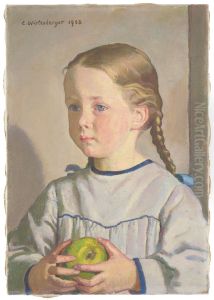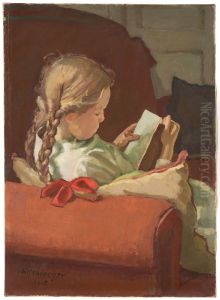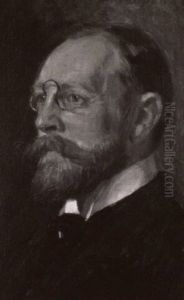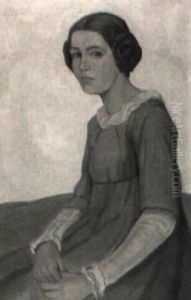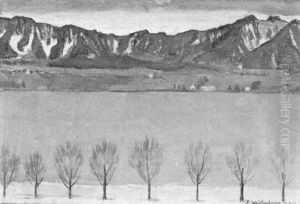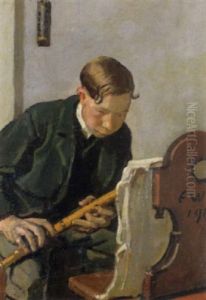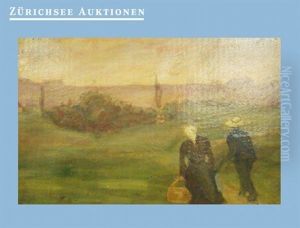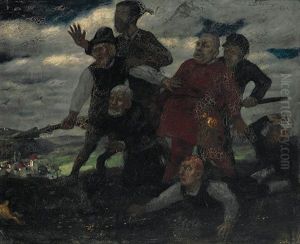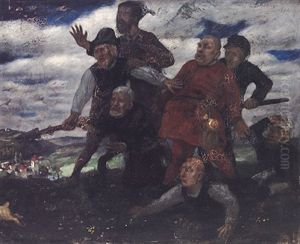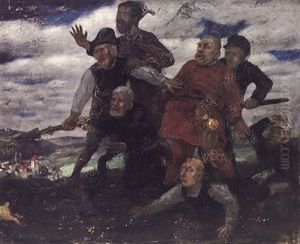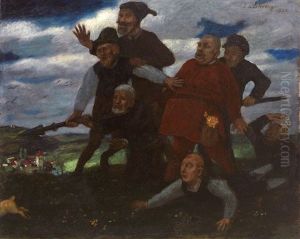Ernst Wurtenberger Paintings
Ernst Wurtenberger was a Swiss-German painter and graphic artist born on December 11, 1886, in Constance, Germany. He is known for his contributions to art during the early to mid-20th century, particularly in the realm of portraiture, landscape painting, and his work as a graphic artist. Wurtenberger's style was shaped by the artistic movements of his time, including Impressionism and Expressionism, as well as the traditional approaches to art that he encountered during his education and travels.
Wurtenberger studied at the Academy of Fine Arts Munich, where he was influenced by the teachings of notable artists such as Angelo Jank and Ludwig von Herterich. After completing his studies, he spent time in Italy, which was a common practice among artists of the era to refine their skills and absorb the rich artistic heritage of the country. His experiences in Italy had a lasting impact on his work, bringing a sense of classicism and harmony to his compositions.
Throughout his career, Ernst Wurtenberger participated in numerous exhibitions and gained recognition for his artistic talent. His works encompassed a variety of subjects, including landscapes of his homeland, scenes from his travels, and portraits that captured the essence of his subjects with sensitivity and depth.
During the tumultuous times of the 20th century, including the two World Wars, Wurtenberger's art provided a sense of continuity and tradition. He remained active in the art world, adapting his techniques and style while maintaining a connection to the classical roots of European painting.
Ernst Wurtenberger died on January 4, 1970, in Freiburg im Breisgau, Germany. His legacy is preserved in the form of his artworks, which are held in various collections and museums. They continue to be appreciated for their craftsmanship and the unique blend of traditional and modern influences that characterize his body of work.
